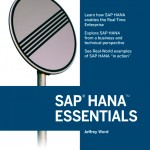What the heck is remediation anyway, you might wonder? That at least was the reaction I got a few times during earlier projects. But when I explained to the CIO of a brewing giant why and how remediation should be part of a Solution Architecture, he said ‘that would be the first time I see it done right’. So, what does it cover?
Let’s start with what remediation is anyway. Simply put: if you develop a new IT solution to replace an existing one, you need to ensure it functions properly within the remaining existing IT environment and IT governance structures. Sounds easy but there is much more to it than switching off a box and/or rerouting interfaces!
Obviously, the way as to how remediation is approached can vary from project to project. But to my opinion, remediation accountability stretches across:
- Due Diligence, to understand as-is (also used for other purposes);
- Solution Architecting the retained environment, in relation to the new solution;
- Designing, building, and testing the retained environment.
In other words it identifies the adjustments that need to be made to retained IT applications including custom developments, data structures, and application security. Next, it covers the underlying technical infrastructure: the systems landscape, the technical platform, UI’s, the Data Centre infrastructure and network changes, including infrastructure security – pertaining explicitly to the retained applications.
And that’s not all. The remediation accountability includes Vendor Management and/or Legal aspects – for example identifying the licenses and contracts around service management, application management and infrastructure management that need to be terminated.
The remediation function in a project typically supports:
- Solution Architecture, by providing architectural input
- Service Introduction, to enable this function to take care of retained-side legal matters
- Integration Testing and User Acceptance Testing of the functionality, for as far the retained side is concerned
- Solution Deployment
The objective of the remediation work is to understand all the IT-related impact the new solution has and to safeguard a coherent IT landscape and IT Governance model after go-live of this new solution.
Mendel

